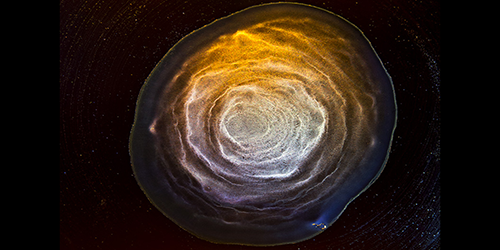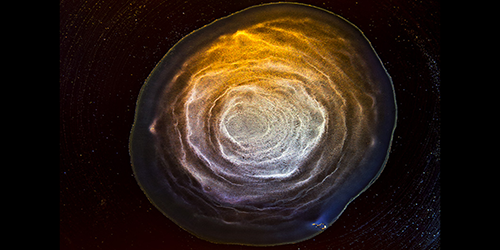Whisky-Inspired Coatings
Surface engineers might prefer whisky over coffee, at least as a model liquid for creating films and coatings. Unlike coffee, whisky tends to leave uniform deposits when it dries. Hyoungsoo Kim and Howard Stone from Princeton University, New Jersey, and their colleagues explored whisky’s secret by measuring the fluid motion within evaporating droplets. The results showed that a combination of molecules—surfactants and polymers—help guide the deposition process in whisky.
Many solutions produce an uneven stain when they dry out on a surface. This so-called “coffee-ring effect” arises because evaporation is faster at the edges of a drop than at the center. When liquid flows outward to replenish this loss, particles in the solution are dragged along and deposited at the edge. This nonuniform residue is undesirable for many applications, including 3D printers that build layer upon layer using liquid deposition.
Researchers have previously found that mixing solvents (such as water and alcohol) can reduce the coffee-ring effect, but only for submillimeter drops. Large drops of whisky, however, appear to produce uniform stains, as revealed in recent images taken by Phoenix-based photographer Ernie Button. Intrigued, Stone’s team used florescent markers to track the motion of fluid in whisky drops and observed inward flow that partly countered the outward flow from differential evaporation. They explained this behavior as due to fat-like surfactant molecules that lower the surface tension. As a drop evaporates, the surfactants collect on the edge, creating a tension gradient that pulls liquid inward (the so-called Marangoni effect). In addition, plant-derived polymers stick to the glass, helping to channel particles to the substrate where they adhere. To confirm this picture, the researchers showed that whisky-like liquids lacking either polymers or surfactants did not produce uniform stains.
This research is published in Physical Review Letters.
–Michael Schirber





